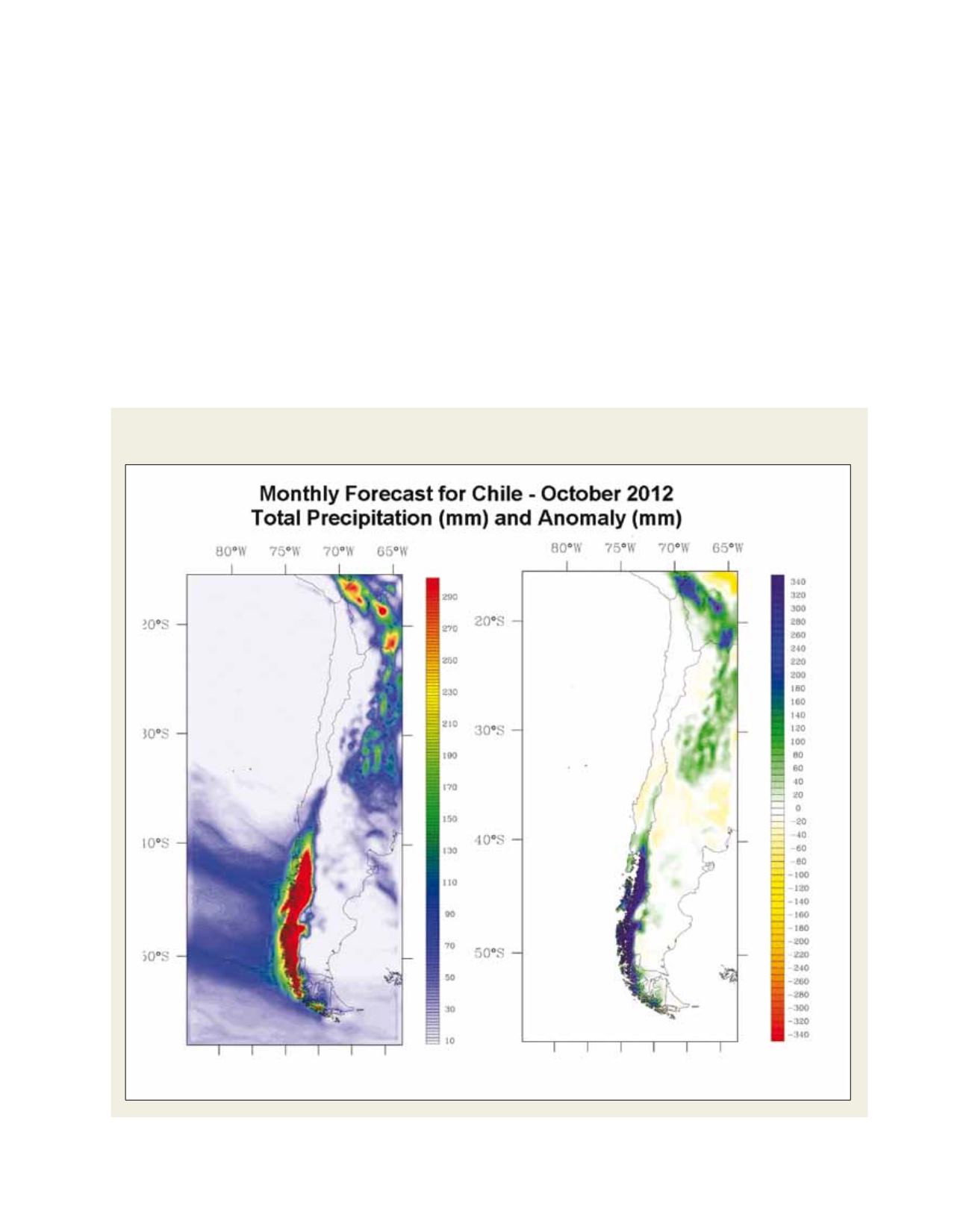

[
] 51
A
griculture
months will enable farmers and decision-makers to take
adequate actions in advance for mitigating the possible
impacts of meteorological conditions in their different
management areas, or for adapting measurements to
benefit from them.
DMC began to make seasonal predictions (three
months) for precipitation and extreme air tempera-
tures for Chile in 2000. Initially, it used conventional
statistical technique such as simple linear regression,
considering the SST, the accumulated precipitation and
average minimum and maximum air temperatures for
Chilean stations as predicting variables. Later in 2003,
the Climate Predictability Tool (CPT) developed by the
International Research Institute for Climate and Society
(IRI) at the University of Columbia was incorporated.
mechanism that, in part, controls the seasonal climate variability,
mostly in central Chile (28-40°). Increasing the sea surface tempera-
ture (SST) above normal (El Niño) or decreasing below normal (La
Niña) in the central-equatorial Pacific ocean, can originate changes
in atmospheric circulation in the Southern Hemisphere that can
favour or inhibit precipitation events in the central, as well as in the
northern and southern regions of Chile.
2
Thus, seasonal climate prediction in Chile is mainly based on
changes in the SST that take place in the central equatorial Pacific
Ocean (known as El Niño 3.4), and its prediction is produced using
global numerical climate models. The variability of the atmospheric
conditions affecting the country, at different spatial and time scales
has a significant impact on agriculture in the central region, where
the main activity is located.
3
Knowing the precipitation and air
temperature behaviour that will most likely prevail for the next three
Source: DMC
A climate forecast for precipitation accumulation corresponding to October 2012,
using the Climate Mesoscale Model - version 5
















